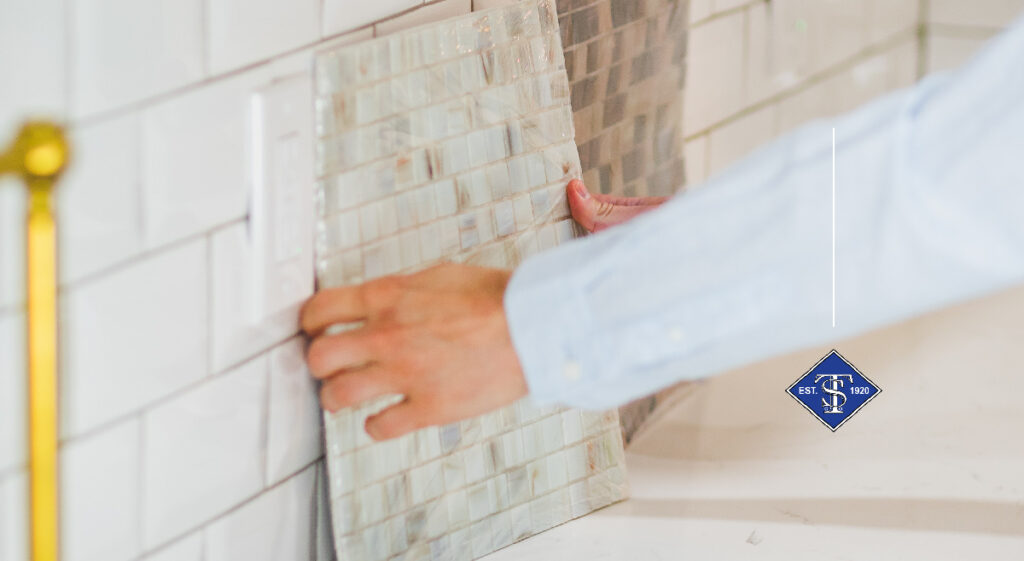How to Plan for a New Tiling Project

Are you thinking about installing tile at home? Does your kitchen, bathroom, or other living area need some work? If so, replacing your floor with tile or creating a tile wall can transform and beautify your space.
Many homeowners DIY their tilework projects, and it’s easier than you might think. However, it’s important that you understand the basics before you begin.
Never heard of it? Don’t worry; we cover everything you need to know to make your tile project a success.
Choose the Material
The first of our tile installation steps is to choose the material and prepare your tools.
You have a variety of options for tile, such as porcelain or ceramic. The best strategy is to think about where you’re placing the tile. For instance, tile placed in the kitchen should be durable enough to withstand scuffs, scrapes, and impacts.
Ceramic tile is softer and easier to cut so is a great choice for walls. This makes it easy to install, which is a benefit for most homeowners. It’s not porous, and glazing protects it and helps keep it easier to clean.
Porcelain tile is harder and denser, which makes it more durable than ceramic. It’s often a good choice for any high-traffic areas. Porcelain does require special tools to install, though.
You also might want to consider using stone tiles to help keep your home cool. However, natural stone tiles, like marble and travertine, are porous so need to be sealed periodically to protect them from stains.

Prepare Your Tools
You’ll need a few tools if you plan to DIY a tile job. The tools should usually cost around $100 or less. You can also rent some tools to save money, such as a tile wet saw.
Here are some tools you should have on hand before you start the job:
- Tile wet saw
- Tile cutter
- Grout float
- Grout sponge
- Tile nippers
- Notched trowel
- Chalk line
- Level
- Plastic buckets
- Rubber mallet
Tips for Laying Perfect Tile
When you’re laying tile, you need to lay it out in advance and mark a guideline. This will tell you where to start tiling a floor. It helps to ensure your pattern is evenly centered.
Most people want to know where to start tile in a room or start along the straightest wall, but tiles have to start from the center of the room. This ensures you have enough space to work outward and that you make a symmetrical pattern.
Find the midpoint by measuring two opposite walls and snapping a chalk line between the center points. Then do the same for the remaining walls. Snapping intersecting chalk lines across the center point will create a cross shape and give you a starting point and lines to guide you. The layout grid also has to be square.
Using a square can help you ensure all your angles match up.
Cutting Tiles to Size
You may need to cut tiles to size to fit in your room. You can use an electric or manual tile cutter. Manual cutters are suitable for standard porcelain and ceramic tiles. Electric cutters are better for stone tiles or thicker porcelain.
Metal snap cutters are good for small projects. Wet saws are better for larger jobs.
Make sure that you wear the appropriate protective equipment, such as safety glasses, when cutting tile.
Perform a Dry Layout
Another important step in laying out floor tiles is to dry-fit them. This helps you get an idea of what the layout will look like and that it’s centered. Again, start at the center line and work outward.
Place spacers between each tile in both directions—lengthwise and widthwise. You can find spacers in different sizes, but keep in mind the wider the spacer is, the wider the grout line will be.
What if the remaining space at the end of a row is less than one-third of a tile? If the leftover space is less than half a tile, readjust your line. You want at least half a tile on either end of a row.
You might want to mix tile from different boxes to ensure any variations in color or pattern are distributed evenly across your floor or surface.
Apply Thinset
When laying tile, work in small sections around 2×2 feet. This ensures the thinset won’t dry before you can lay the tile. Lay the tile down and press down firmly.
Level the tiles using a rubber mallet and beater block.
Cut tiles to size and around any obstructions if necessary.
After the thinset has dried for 48 hours, take out the tile spacers. Use your hands or a soft tool to do this to avoid scratching the tile.
Place Grout
There are different types of grout. Make sure that you’re using the right type for the tile you’re using. You can use the manufacturer’s coverage charts to figure out how much grout you’ll need for your project.
Mix and apply the grout. Using the grout float, spread the grout in sweeping arcs at an angle. Work diagonally and fill the joints completely.
Afterward, remove excess grout using the float.
You’ll want to avoid walking on the tile for at least 12-24 hours. Seal the grout to prevent water damage and mold growth.
Plan For Your Next Tiling Project
Using these tips for laying tile can help you prepare for your next tiling project. Make sure you also have all the tools you need in advance and plan the layout before setting the tile.
When you’re ready to purchase your tile, visit one of our tile showrooms in New Jersey and book an appointment.

